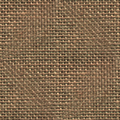Paduasoy

Paduasoy or padesoy[1] /ˈpædjuː.əsɔɪ/ (French: peau de soie) is a luxurious strong corded or grosgrain silk textile that originated in Early Modern Europe. The term paduasoy first appeared in English in 1663.[2]
Paduasoy silk was woven in a variation of the satin weave, with bindings arranged to create fine cross-ridges across the fabric.[3] In the British East India Company supercargoes' records, examined by Leanna Lee-Whitman, paduasoy made its first appearance in 1736.[4] Its fine appearance is endorsed in a letter of Mrs. Benjamin Franklin to her husband in London, in 1765: "The chairs are plain horsehair and look as well as Paduasoy."[5] In the British East India records consulted by Leanna Lee-Whitman, black paduasoys completely supplanted "plain" ones after 1761:[6] George Washington commissioned a friend, Tench Tilghman, to purchase numerous household items, "if great bargains are to be had", from the cargo of a ship in the China trade that had docked at Baltimore and were to be auctioned in October 1785. Among his requests, if they could be had cheaply, were "About 13 yds of good bla: paduasoy".[7] Beatrix Potter employed paduasoy to set the old-fashioned scene in The Tailor of Gloucester, which begins, "In the time of swords and periwigs and full-skirted coats with flowered lappets—when gentlemen wore ruffles, and gold-laced waistcoats of paduasoy and taffeta—there lived a tailor in Gloucester.[8]
In Elizabeth Gaskell's Cranford (1851), an old white paduasoy wedding dress longed for by Miss Matty's mother has been recut into a christening cloak for a baby.[9][10]
The original French term, peau de soie, is once again part of the English vernacular.
Notes
- ↑ Deborah Franklin used the phonetic spelling "padeysway" in 1737 (University of Delaware, The Accounts of Benjamin Franklin Through 1747).
- ↑ OED, s.v. "Paduasoy"; the deformation of a "Padua say", a kind of serge from Padua (OED) intends an undeserved connection to "silk of Padua". This has misled the unwary: "She was attired in a robe of the rich silk of Padua known as paduasoy, of a soft lustrous texture, shot with threads of silver" (Isabella MacFarlane, A Royal Knight: A Tale of Nuremberg 1905).
- ↑ According to Leanna Lee-Whitman, "The Silk Trade: Chinese Silks and the British East India Company", Winterthur Portfolio, 17.1 (Spring 1982:21-41), esp. pp 30f.
- ↑ Lee-Whitman 1982:30.
- ↑ Quoted in R. T. Haines Halsey, "Textiles as Furnishings in Early American Homes Textiles as Furnishings in Early American Homes", The Metropolitan Museum of Art Bulletin 19.6 (June 1924:148-151) p. 151.
- ↑ Leanna Lee-Whitman 1982:31.
- ↑ Quoted in The Pennsylvania Magazine of History and Biography 40.4 (1916:460)
- ↑ "Terms for fabric consume the first pages of Tailor of Gloucester", observes H. Field, "A Few of the Author's Favorite Things: Clothes, Fetishism, and The Tailor of Gloucester" The Lion and the Unicorn, 2010.
- ↑ "Elegance By Design - Northampton Wedding Dresses". Retrieved 2012-04-10.
- ↑ Cranford, "Old Letters".


.svg.png)